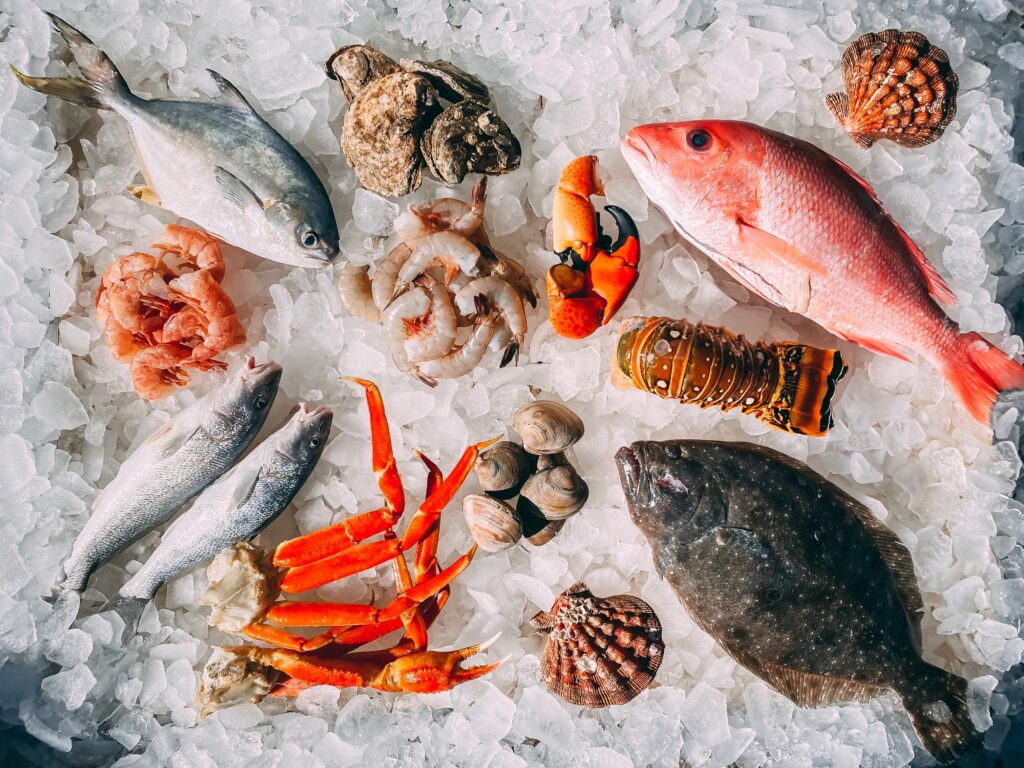by Rose Lacombe
If you eat a lot of seafood, you have probably heard about mercury poisoning. But what is mercury poisoning, and why is it such a big deal?
To understand why mercury is such a concerning element in our food, we must first understand where it comes from. Mercury is a natural element found in the Earth, but most of it is buried and inactive. However, when disturbances happen, like a forest fire burning the ground, or mining excavations digging up large pieces of land, mercury is released. The volatile particles are light and easily transported through the air. Eventually, the particles drop out of the air and settle in soils and water.
Once mercury is reintroduced into the environment, it is easily taken up by wildlife through their diet. This is where mercury starts to become problematic. In many animal groups, mercury is known to cause severe health effects. These can include malformations in embryos or young, lesions in important organs, changes in behaviour, and in some cases, mercury exposure can kill an animal. In addition to being an important toxicant (a chemical that causes harm), mercury accumulates in animal proteins. This means that the longer an animal is eating mercury-contaminated food, the more mercury it will accumulate in its body and muscles, resulting in more severe impacts.
This wouldn’t be so bad if mercury only affected the occasional animal here and there, but this pesky metal can also biomagnify. That means that as contaminated prey animals are eaten by predators, the amount of mercury found at each level of the food web is multiplied. This means that predators that eat a lot of meat (and thus, muscle), are ingesting higher quantities of mercury more often, and will suffer greater health impacts. This phenomenon is even worse in aquatic environments because the food webs in those habitats are often longer. Aquatic systems can host more species than terrestrial systems can, meaning that there are more links in the proverbial food “chain”. This means that animals eating predatory fish (like perch, walleye, or salmon) are likely to have even more mercury buildup in their bodies.
Now, you might be thinking, “that’s terrible for the bears and seals that eat a lot of fish”, but it’s important to consider humans as well. Seafood makes up an important part of human diet worldwide and is an important vector of human exposure to mercury. There have been severe cases of mercury poisoning, such as Minamata Disease, named after the small Japanese fishing village of Minamata. Chemical dumping by a nearby industry poisoned water with methylmercury, a particularly powerful form of mercury. The fish and shellfish became highly contaminated and as the villagers, their pets, and their livestock consumed the tainted seafood, they fell very ill. Deaths in this community due to mercury poisoning occurred for over 30 years, which prompted the Minamata Convention to control mercury emissions to be adopted in 2013.
While this is a particularly extreme example, mercury poisoning is an important concern. One of the best ways to reduce your risk of mercury poisoning is by reducing your exposure. This can include reducing your fish consumption, or taking a break from seafood after a particularly gourmet trip to the coast. If you are an avid fish consumer and are worried about your mercury levels, do not worry! Our bodies can evacuate mercury from our systems, although it does take time. Overall, the best practice to avoid mercury poisoning is to eat seafood in moderation.

Photo by Mike Bergmann on Unsplash

Rose Lacombe is a master’s student at McGill University in Dr. Kyle Elliott’s lab, co-supervised by Dr. Raphaël Lavoie (ECCC). She discovered her love of field biology by working with seabirds and passerines during her undergraduate summers. Rose’s interests lie in using new methods to approach important ecological questions concerning conservation and management of wildlife.

0 Comments